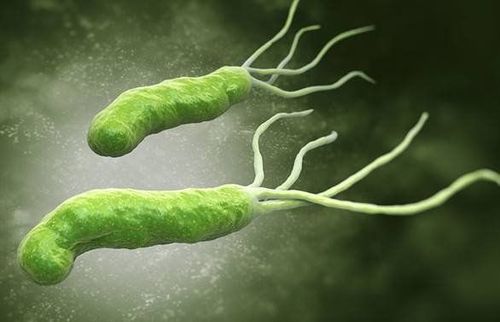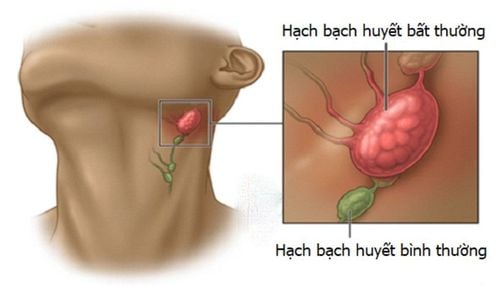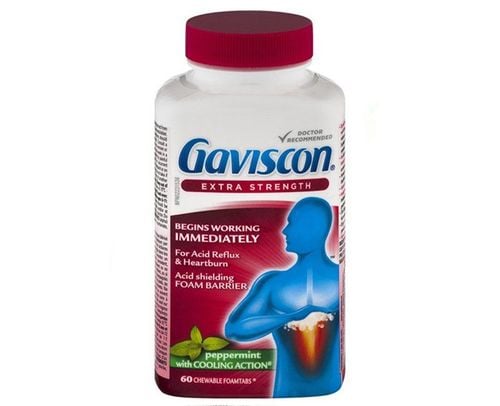This is an automatically translated article.
Posted by Doctor Mai Vien Phuong - Department of Medical Examination & Internal Medicine - Vinmec Central Park International General Hospital
Lymphoma occurs in many organs of the body, but there is a lymphoma involving the gastric mucosa caused by Helicobacter Pylori, which has received little attention, which will be discussed in this article.
1. Positioning the stomach in the human body
Stomach is the first part of the digestive system located inside the abdomen. The stomach or stomach is the largest part of the digestive tract system in the human body, with a complex structure, performing two main functions: mechanical grinding of food, permeation of gastric juices and decomposition of food. by digestive enzymes in gastric juice. Although it is a part of the body, not everyone knows what the stomach is? The stomach is an important part of the human digestive system, located between the esophagus and duodenum, the first part of the small intestine. This is considered the largest digestive organ with the function of storing and digesting food.


2. What are lymph nodes (lymph nodes)?
Lymph nodes (lymph nodes) are part of the lymphatic system, located in a multitude of smooth, oval-shaped structures scattered along the lymphatic vessels.
In the human body, there are about 500-600 lymph nodes located in the path of lymphatic vessels, often standing in groups and receiving lymph from each body region. The most common places where lymph nodes are located are the neck, armpits, and groin, but more often than not, it occurs all over the body.
In the immune system, lymph nodes function as filters or traps to trap foreign particles.
The lymph nodes play an important role in the functioning of the immune system. Lymph nodes may become hot or swollen. This is one of the warning signs of some diseases like sore throat to dangerous like cancer.

3. Definition of U MALT
Gastric MALT lymphoma is a type of non-Hodgkin lymphoma that is characterized by slow replication and proliferation of B cells, a type of immune cell in the stomach lining. This cancer accounts for about 12% of extranodal lymphomas, non-Hodgkin lymphoma occurs in about 18% of men, and extranodal non-Hodgkin lymphoma occurs in women. During 1999–2003, the annual incidence of gastric MALT lymphoma in the United States was approximately 1 in 100,000 people in the general population.Normally, the gastric lining lacks lymphoid tissue or a protective immune system, but this tissue growth is often stimulated in the local lining response to H. pylori. Only in rare cases where this tissue is elevated develops MALT lymphoma. However, almost all patients with gastric MALT lymphoma develop signs of H. pylori infection and the risk of developing this tumor is 6 times higher in infected subjects than in uninfected subjects.
4. Pathogenesis of MALT . tumor
Peripheral lymphadenopathy of mucosa-associated lymphoid tissue (EMZL-MALT) is associated with chronic immune stimulation due to infection or autoimmune stimulation. An association between Helicobacter pylori (HP) infection and gastric MALT lymphoma has been demonstrated. The eradication of Helicobacter pylori with antibiotics has emerged as standard therapy in the treatment of H-positive early gastric MALT lymphoma. High response rates and long-term survival have been reported in patients with local gastric lymphoma MALT treated with low-dose radiation therapy. Monoclonal antibody therapy and chemotherapy are reserved for patients with radiotherapy failure or relapse and those with advanced disease.
This is a relatively rare subtype of slow-growing non-Hodgkin lymphoma. Accounts for approximately 3-7% of all B-cell lymphomas. Derived from memory B cells at the margins of mucosal-associated secondary lymphoid tissues of various organs, This B-cell lineage not only recurs locally but can also transform into diffuse large B-cells with the risk of systemic spread. The stomach is the most commonly affected organ and HP is responsible for 90% of gastric MALT lymphoma cases. In the remaining 10% of cases, HP is not detected and treatment is considered ineffective.
5. Diagnosis of MALT . tumor
Diagnosis of HP combines a non-invasive and invasive method (eg, urea breath test and clotest), to exclude the possibility of a false-negative result in patients with gastric mucosal atrophy and patients taking proton pump inhibitors (PPIs). Involvement of a bacterium other than HP in causing chronic gastritis in H. heilmannii-negative but H. heilmannii-positive MALT lymphoma cases with antibiotic therapy. Although there have been reports of cases of HP-negative gastric MALT lymphoma that have been successfully treated with antibiotic therapy, some authors attribute this to a false negative. Radiation therapy is effective for patients with localized gastric MALT lymphoma and is indicated for patients with poor response to antibiotic therapy, HP negative. The 5-year disease-free survival rate was 97% with radiation doses less than or equal to 30Gy based on a median follow-up of 7.5 years. MALT lymphoma occurs in extranodal lymphatics, in which gastric MALT lymphoma (GML - Gastric MALT lymphoma) is the most common (70%), in addition to lung (14%), the subcutaneous tissue of the eye. glomerulus (12%), thyroid gland (4%) and small intestine (1%).
6. History of MALT . tumor
HP was discovered by Marshall and Warren in 1980 from gastric mucosa of patients with chronic gastritis. Helicobacter pylori infection of the stomach is considered a major cause of chronic gastritis and a major contributor to gastric MALT lymphoma. Since Isaacson and Wright first reported on MALT in 1983, numerous studies have since elucidated many aspects of this disease.


7. Clinical symptoms of MALT . tumor
The clinical symptoms of gastric MALT lymphoma are usually vague and nonspecific, there may be epigastric pain, persistent vomiting, weight loss, gastrointestinal bleeding, in rare cases: fever or sweating Night sweats can be present (a typical manifestation of syndrome B)... even discovered incidentally without any symptoms.
Please continue to watch:
Please dial HOTLINE for more information or register for an appointment HERE. Download MyVinmec app to make appointments faster and to manage your bookings easily.
Please continue reading : Gastric Maltoma Part 2: Anatomy, Classification and TreatmentReferences :
Asano N, Iijima K, Koike T, Imatani A, Shimosegawa T. Helicobacter pylori-negative gastric mucosa -associated lymphoid tissue lymphomas: A review. World J Gastroenterol. 2015. Ye H, Liu H, Raderer M, et al. gastric MALT lymphoma Brief report High incidence of t (11;18) (q21;q21) in Helicobacter pylori – negative gastric MALT lymphoma. 2013. Koch P, del Valle F, Berdel WE, et al. Primary gastrointestinal non-Hodgkin's lymphoma: I. Anatomic and histologic distribution, clinical features, and survival data of 371 patients registered in the German Multicenter Study GIT NHL 01/92. J Clin Oncol. 2001;19(18):3861- 3873. doi:10.1200/JCO.2001.19.18.3861 Ruskone-Fourmestraux A, Lavergne A, Aegerter PH, et al. Predictive factors for regression of gastric MALT lymphoma after anti-Helicobacter pylori treatment. Gut. 2001;48(3):297-303. doi:10.1136/gut.48.3.297














